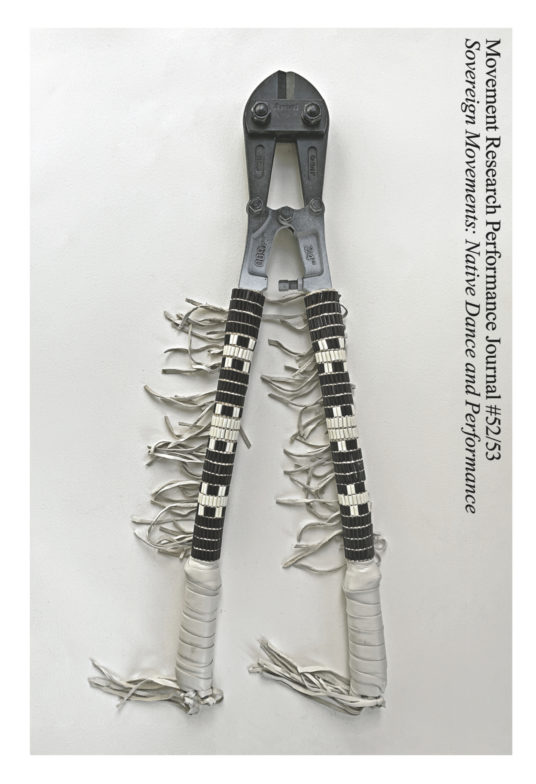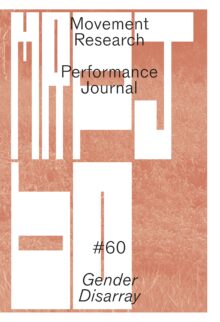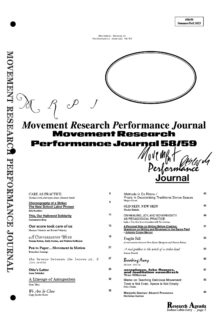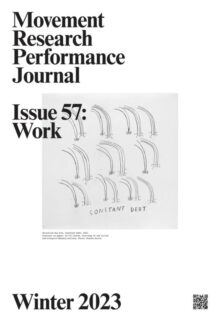Movement Research announces Issue 52/53 of its print publication, the Movement Research Performance Journal. For this issue, Sovereign Movements: Native Dance and Performance, guest editor, choreographer Rosy Simas invited writer, Ahimsa Timoteo Bodhrán, to work with her. Together they assembled contributors from Native and Indigenous communities to reflect upon their practices, the historical conditions out of which they operate as well as movement, performance, and choreography as a socio-political project. Just as it is important for physical institutions to acknowledge that they sit upon occupied land of Native and Indigenous people, so too must institutions of history, practice, and epistemology acknowledge their occupation of knowledge and memory.
Throughout this issue, dance and movement is posited as a powerful strategy against settler-colonial mindsets and as an effective tool against erasure of Native and Indigenous cultural traditions. These pages discuss the importance of Native sovereignty and analyze various histories of resistance to settler-colonialism. Artists in the issue propose alternative artistic models to probe the roles of art and artists in society towards a more expansive constellation that fundamentally critiques the Western reward system in culture as well as the often celebrated cult of authorship.
The cover and back cover of this issue invoke the history and intentionality of the Two Row Wampum Treaty from 1613 made between the Haudenosaunee and Dutch settlers. Two Row Wampum (back cover) is a living treaty—a way for people to live together in peace and respect and to ensure that people meet to discuss issues that emerge. Merritt Johnson’s Border Wampum (front cover) is a physical and symbolic tool for action against colonial borders. The pattern of jagged white lines in a dark purple ground references the jagged cutting apart of land and Indigenous life by colonial borders opposed to different ways of life flowing smoothly side by side.







